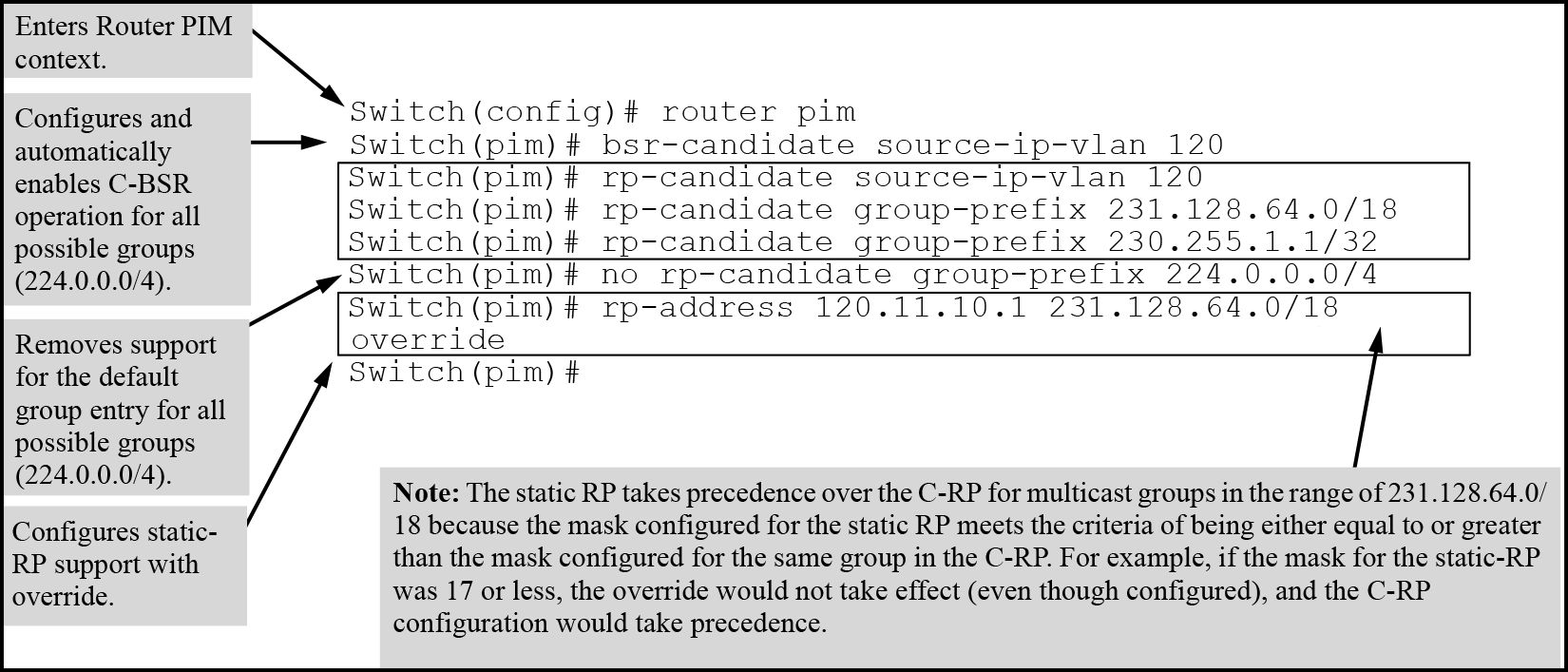Configuring PIM-SM support in the router PIM context
IP routing, IP multicast routing, and at least one routing method (RIP, OSPF, and/or static IP routes) are already configured in the global configuration context.
An IP routing method (RIP or OSPF) and PIM-sparse are already configured in the static VLAN context on which you want to support PIM-SM operation.
Routers configured for C-RP operation can also be configured for C-BSR operation.
Use of static RP operation must be identically configured on all PIM-SM routers in the domain.
Enabling BSR operation on the router, including specifying a source IP address.
Enabling C-RP operation on the router.
Replacing the default multicast group range (all) with a smaller range (231.128.24.0/18) and a single group address (230.255.1.1/32.)
Enabling static RP with an
overrideon this router for a single group address (231.128.64.255/32) within the range of the C-RP support for the 231.128.24.0 group.Leaving the other router PIM fields in their default settings.

The next figure illustrates the results of the above commands in the router's running configuration.
Configuration results of the commands in Example of enabling PIM-SM in the router PIM context
switch(pim)# show running configuration: router pim bsr-candidate bsr-candidate source-ip-vlan 120 bsr-candidate priority 1 rp-address 120.10.10.2 231.128.64.255 255.255.255.255 rp-candidate rp-candidate source-ip-vlan 120 rp-candidate group-prefix 230.255.1.1 255.255.255.255 rp-candidate group-prefix 231.128.64.0 255.255.192.0 rp-candidate hold-time 150 exit